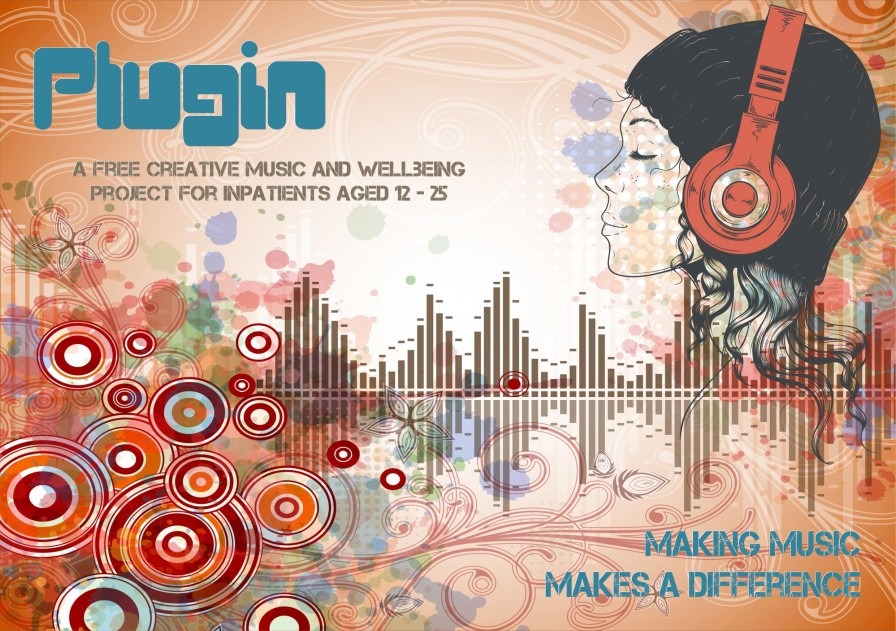A comparison/review of the different approaches used in contrasting settings – what I have learnt from being a Young Music Leader on Quench Arts’ Plugin project by Dan Scott

One of my favourite things to do as a musician is to explore different sounds, genres or instruments. As part of the Plugin project, I have come into contact with many different styles which I had never explored before, using music technology as well as live instruments. I have shadowed three experienced music leaders and have learnt many new techniques and ways to create music which has helped me deliver sessions to young people with various mental health conditions. Here are some of the music-making techniques I have leant and how they have been implemented in sessions.
As part of the project, I have led sessions on a male forensic unit. Some of the participants already had musical experience as rappers and were ready to record as soon as they entered the session. Hip-hop was always prevalent in this setting and because of this, music technology played a major role in the music creation process. We would use Logic Pro X to create our songs with a midi keyboard to record in instrumental tracks. As the participants became more comfortable with Logic, they were able to explore different sounds and try making unfamiliar genres of music. This experimentation led to them creating their own instrumentals with grime and cinematic influences and, in the process, changing how they rap to fit the genre. For those who found using the midi keyboard a daunting task, we used loops to create our song structures. The huge library and simple design of loops in Logic was a great way to show how we can build up songs quickly.
While working on 3 CAHMS wards, I saw how music technology can be used alongside live instruments to create original music. Many of the participants here already had some experience playing an instrument or were very keen to learn. Logic was used on a MacBook with recording equipment to create a mobile recording studio which was able to move across the wards with ease. It was great to have Logic as a recording tool as it would allow us to enhance recordings quickly with compressors, EQ and reverb. Music technology allows for endless possibilities, leading to some very creative uses. In one instance, a synth solo and drumbeat were created from different burps recorded by a participant. With another young person, synth pads were added to a track which comprised of live recordings to bolster certain sections. Using music technology here enhanced the music creation process. We were able to quickly produce tracks in which the participants took pride and were able to teach some new skills about how to record themselves to produce the best sound possible.
My final setting involved working with young people living in the local community but who struggled to access mainstream activity. Some of the participants had some musical experience but for many this was their first time. It was here that I learnt how important of a tool the iPad and GarageBand can be. For most participants, the iPad was used as an accessible way into creating music. The auto chord function and drummer tool allowed for for the young people to quickly create tracks. To come to a session and create music for the first time can be quite a daunting task but the iPad helped to ease participants into the idea of making music. One function that GarageBand brings is the ability to record and manipulate samples. With one young person, we would sample sounds using objects around us, such as table, chairs, coffee tins and many more. The sampler on GarageBand would allow us to manipulate pitch and tempo. Through this process we were able to produce a song in which we later added synth tracks too in Logic. The sampler added some physicality to the sessions and explore the surrounding environment, allowing us to think of inventive ways to use our surroundings to create music.
This is just a brief insight to some of the technology and approaches I have used, many of which overlapped with other settings. The wide variety of techniques and genres made everyone’s session individualistic. One of the main lessons I have learnt on this project is that the achievement made in sessions, no matter how small, should not ignored. It may take weeks for someone to find their way into the music making process and that’s ok and the young person does not have to do every part of the music making process. Some wanted to purely focus on one aspect, whether it be creating lyrics or part of an instrumental. It has been an amazing experience to see participants overcome their own hurdles and produce music which is personal to themselves which they are happy to share with the outside world.
